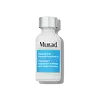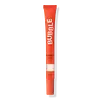What's inside
What's inside
 Key Ingredients
Key Ingredients

 Benefits
Benefits

 Concerns
Concerns

 Ingredients Side-by-side
Ingredients Side-by-side

Water
Skin ConditioningPropanediol
SolventGlycerin
HumectantPentylene Glycol
Skin ConditioningSalicylic Acid
MaskingDicaprylyl Carbonate
EmollientBehenyl Alcohol
EmollientDimethyl Isosorbide
SolventPhysalis Pubescens Fruit Juice
Skin ConditioningAlbatrellus Confluens Extract
HumectantUrea
BufferingYeast Amino Acids
HumectantTrehalose
HumectantInositol
HumectantTaurine
BufferingBetaine
HumectantAllantoin
Skin ConditioningPolylysine
Tocopherol
AntioxidantPullulan
Caprylic/Capric Triglyceride
MaskingLecithin
EmollientPhytosterols
Skin ConditioningCetyl Alcohol
EmollientStearyl Alcohol
EmollientGlyceryl Stearate
EmollientPolyglyceryl-10 Myristate
Skin ConditioningMenthyl Lactate
MaskingXanthan Gum
EmulsifyingSclerotium Gum
Emulsion StabilisingHydrogenated Lecithin
EmulsifyingLeuconostoc/Radish Root Ferment Filtrate
AntimicrobialSilica
AbrasiveDisodium EDTA
Sodium Hydroxide
BufferingCitric Acid
BufferingWater, Propanediol, Glycerin, Pentylene Glycol, Salicylic Acid, Dicaprylyl Carbonate, Behenyl Alcohol, Dimethyl Isosorbide, Physalis Pubescens Fruit Juice, Albatrellus Confluens Extract, Urea, Yeast Amino Acids, Trehalose, Inositol, Taurine, Betaine, Allantoin, Polylysine, Tocopherol, Pullulan, Caprylic/Capric Triglyceride, Lecithin, Phytosterols, Cetyl Alcohol, Stearyl Alcohol, Glyceryl Stearate, Polyglyceryl-10 Myristate, Menthyl Lactate, Xanthan Gum, Sclerotium Gum, Hydrogenated Lecithin, Leuconostoc/Radish Root Ferment Filtrate, Silica, Disodium EDTA, Sodium Hydroxide, Citric Acid
Salicylic Acid 1.8%
MaskingWater
Skin ConditioningPentylene Glycol
Skin ConditioningSodium Polyacrylate Crosspolymer-1
EmollientGaultheria Procumbens Leaf Extract
PerfumingGlycerin
HumectantAzelaic Acid
BufferingSalix Nigra Bark Extract
Skin ProtectingAloe Barbadensis Leaf Juice
Skin ConditioningZinc PCA
HumectantDipotassium Glycyrrhizate
HumectantSambucus Nigra Fruit Juice
AstringentSpiraea Ulmaria Flower Extract
Skin ConditioningCitric Acid
BufferingSodium Hydroxide
BufferingPhenoxyethanol
PreservativeSalicylic Acid 1.8%, Water, Pentylene Glycol, Sodium Polyacrylate Crosspolymer-1, Gaultheria Procumbens Leaf Extract, Glycerin, Azelaic Acid, Salix Nigra Bark Extract, Aloe Barbadensis Leaf Juice, Zinc PCA, Dipotassium Glycyrrhizate, Sambucus Nigra Fruit Juice, Spiraea Ulmaria Flower Extract, Citric Acid, Sodium Hydroxide, Phenoxyethanol
 Reviews
Reviews

Ingredients Explained
These ingredients are found in both products.
Ingredients higher up in an ingredient list are typically present in a larger amount.
Citric Acid is an alpha hydroxy acid (AHA) naturally found in citrus fruits like oranges, lemons, and limes.
Like other AHAs, citric acid can exfoliate skin by breaking down the bonds that hold dead skin cells together. This helps reveal smoother and brighter skin underneath.
However, this exfoliating effect only happens at high concentrations (20%) which can be hard to find in cosmetic products.
Due to this, citric acid is usually included in small amounts as a pH adjuster. This helps keep products slightly more acidic and compatible with skin's natural pH.
In skincare formulas, citric acid can:
While it can provide some skin benefits, research shows lactic acid and glycolic acid are generally more effective and less irritating exfoliants.
Most citric acid used in skincare today is made by fermenting sugars (usually from molasses). This synthetic version is identical to the natural citrus form but easier to stabilize and use in formulations.
Read more about some other popular AHA's here:
Learn more about Citric AcidGlycerin is already naturally found in your skin. It helps moisturize and protect your skin.
A study from 2016 found glycerin to be more effective as a humectant than AHAs and hyaluronic acid.
As a humectant, it helps the skin stay hydrated by pulling moisture to your skin. The low molecular weight of glycerin allows it to pull moisture into the deeper layers of your skin.
Hydrated skin improves your skin barrier; Your skin barrier helps protect against irritants and bacteria.
Glycerin has also been found to have antimicrobial and antiviral properties. Due to these properties, glycerin is often used in wound and burn treatments.
In cosmetics, glycerin is usually derived from plants such as soybean or palm. However, it can also be sourced from animals, such as tallow or animal fat.
This ingredient is organic, colorless, odorless, and non-toxic.
Glycerin is the name for this ingredient in American English. British English uses Glycerol/Glycerine.
Learn more about GlycerinPentylene glycol is typically used within a product to thicken it. It also adds a smooth, soft, and moisturizing feel to the product. It is naturally found in plants such as sugar beets.
The hydrophilic trait of Pentylene Glycol makes it a humectant. As a humectant, Pentylene Glycol helps draw moisture from the air to your skin. This can help keep your skin hydrated.
This property also makes Pentylene Glycol a great texture enhancer. It can also help thicken or stabilize a product.
Pentylene Glycol also acts as a mild preservative and helps to keep a product microbe-free.
Some people may experience mild eye and skin irritation from Pentylene Glycol. We always recommend speaking with a professional about using this ingredient in your routine.
Pentylene Glycol has a low molecular weight and is part of the 1,2-glycol family.
Learn more about Pentylene GlycolSalicylic Acid (also known as beta hydroxy acid or BHA) is a well-known ingredient for treating skin that struggles with acne and clogged pores. It exfoliates both the skin's surface and deep within the pores to help clear out buildup, control oil, and reduce inflammation.
Unlike AHAs (alpha hydroxy acids), salicylic acid is oil-soluble. This allows it to penetrate into pores which makes it especially effective for treating blackheads and preventing future breakouts.
Salicylic acid is also known for its soothing properties. It has a similar structure to aspirin and can calm inflamed or irritated skin, making it a good option for acne-prone skin that is also sensitive.
Concentrations of 0.5-2% are recognized by the U.S. FDA as an over-the-counter topical acne product.
It can cause irritation and/or dryness if one's skin already has a compromised moisture barrier, so it's best to focus on repairing that before introducing this ingredient into your routine.
While salicylic acid does not increase sun sensitivity, it’s still important to wear sunscreen daily to protect your skin.
If you are looking for the ingredient called BHA or Butylated Hydroxyanisole, click here.
Learn more about Salicylic AcidSodium Hydroxide is also known as lye or caustic soda. It is used to adjust the pH of products; many ingredients require a specific pH to be effective.
In small amounts, sodium hydroxide is considered safe to use. However, large amounts may cause chemical burns due to its high alkaline.
Your skin has a natural pH and acid mantle. This acid mantle helps prevent harmful bacteria from breaking through. The acid mantle also helps keep your skin hydrated.
"Alkaline" refers to a high pH level. A low pH level would be considered acidic.
Learn more about Sodium HydroxideWater. It's the most common cosmetic ingredient of all. You'll usually see it at the top of ingredient lists, meaning that it makes up the largest part of the product.
So why is it so popular? Water most often acts as a solvent - this means that it helps dissolve other ingredients into the formulation.
You'll also recognize water as that liquid we all need to stay alive. If you see this, drink a glass of water. Stay hydrated!
Learn more about Water